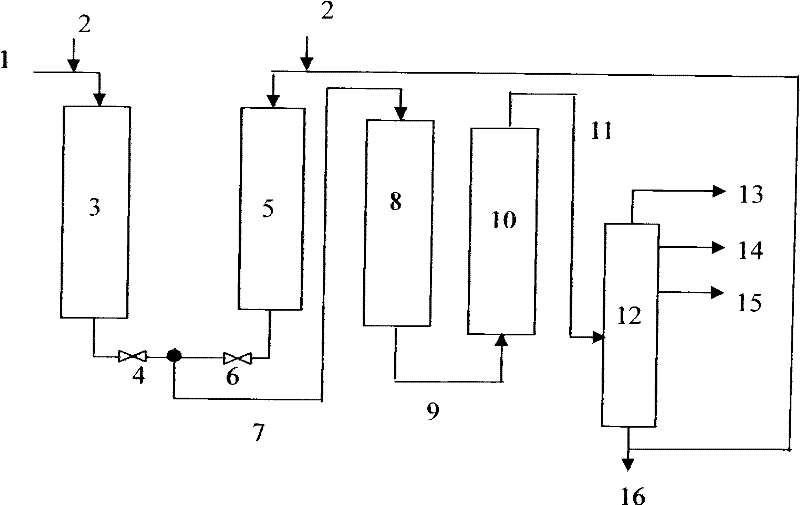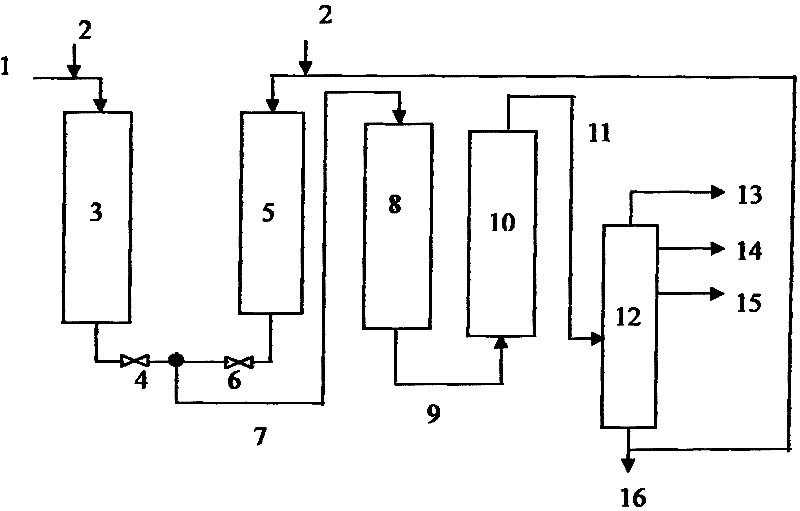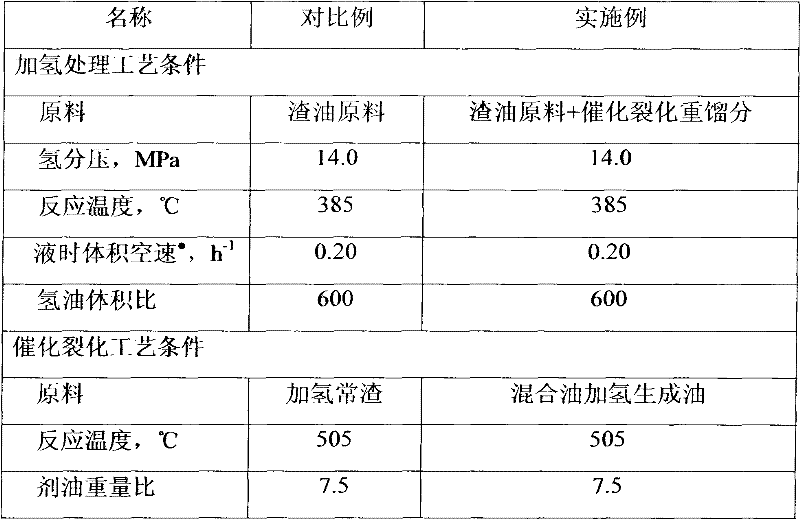Residual oil hydrogenation treatment and catalytic cracking combination method
A technology of catalytic cracking and residual oil hydrogenation, which is applied in the field of gasoline production, can solve the problems of increased investment costs, limited naphtha and diesel yield, and reduced total yield, so as to reduce equipment investment and operating energy consumption, and save Eliminate repetitive processing steps and reduce the effect of heat exchange equipment
- Summary
- Abstract
- Description
- Claims
- Application Information
AI Technical Summary
Problems solved by technology
Method used
Image
Examples
Embodiment
[0035] This embodiment adopts the combined method of residual oil hydrotreating and catalytic cracking provided by the present invention, and the flow chart is shown in figure 1 . Residual oil raw material and catalytic cracking heavy fraction enter different hydrogenation protection reactors respectively, and the hydrogenation streams generated are mixed. The design of the fractionation system is simplified, and only dry gas, liquefied gas and gasoline fractions are fractionated. FCC diesel oil, catalytic cracking cycle oil and catalytic oil slurry are directly used as heavy fractions of catalytic cracking without fractionation, and the heavy fractions of catalytic cracking are recycled after filtering out solid impurities. To hydrogenation protection reactor 5. Table 2, Table 3, Table 4, and Table 6 are the process conditions, product distribution and main product properties respectively.
[0036] The comparison results show that after the catalytic cracking heavy distilla...
PUM
 Login to View More
Login to View More Abstract
Description
Claims
Application Information
 Login to View More
Login to View More - R&D
- Intellectual Property
- Life Sciences
- Materials
- Tech Scout
- Unparalleled Data Quality
- Higher Quality Content
- 60% Fewer Hallucinations
Browse by: Latest US Patents, China's latest patents, Technical Efficacy Thesaurus, Application Domain, Technology Topic, Popular Technical Reports.
© 2025 PatSnap. All rights reserved.Legal|Privacy policy|Modern Slavery Act Transparency Statement|Sitemap|About US| Contact US: help@patsnap.com



